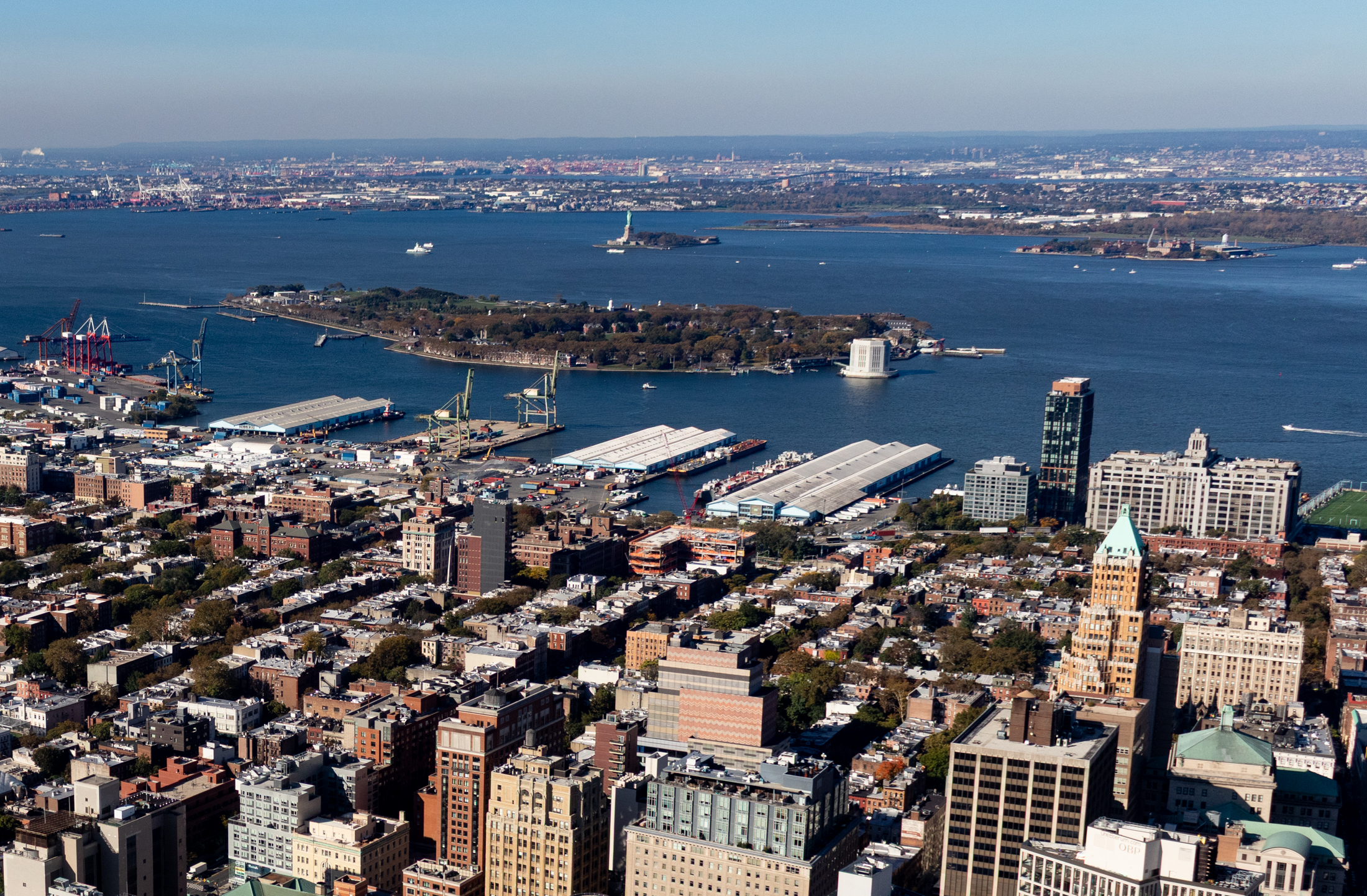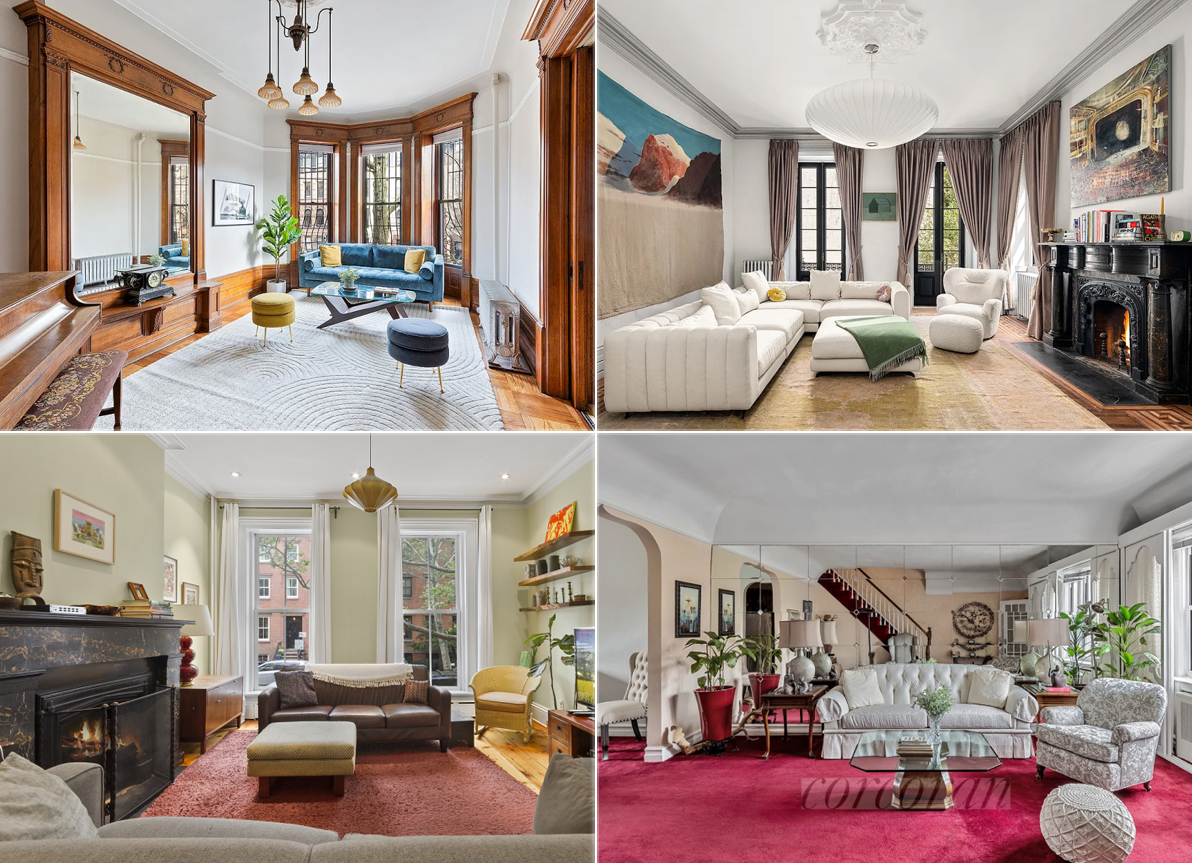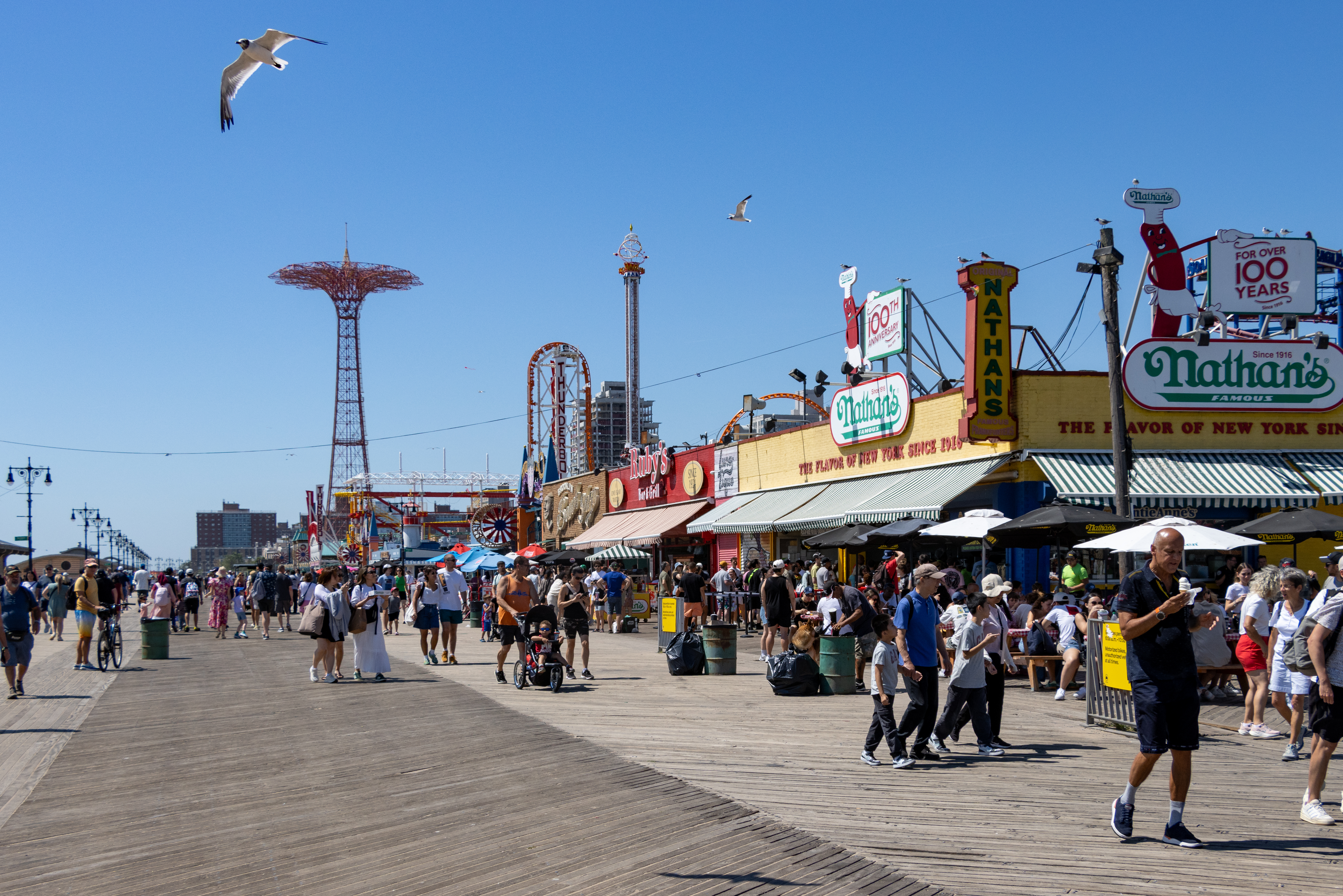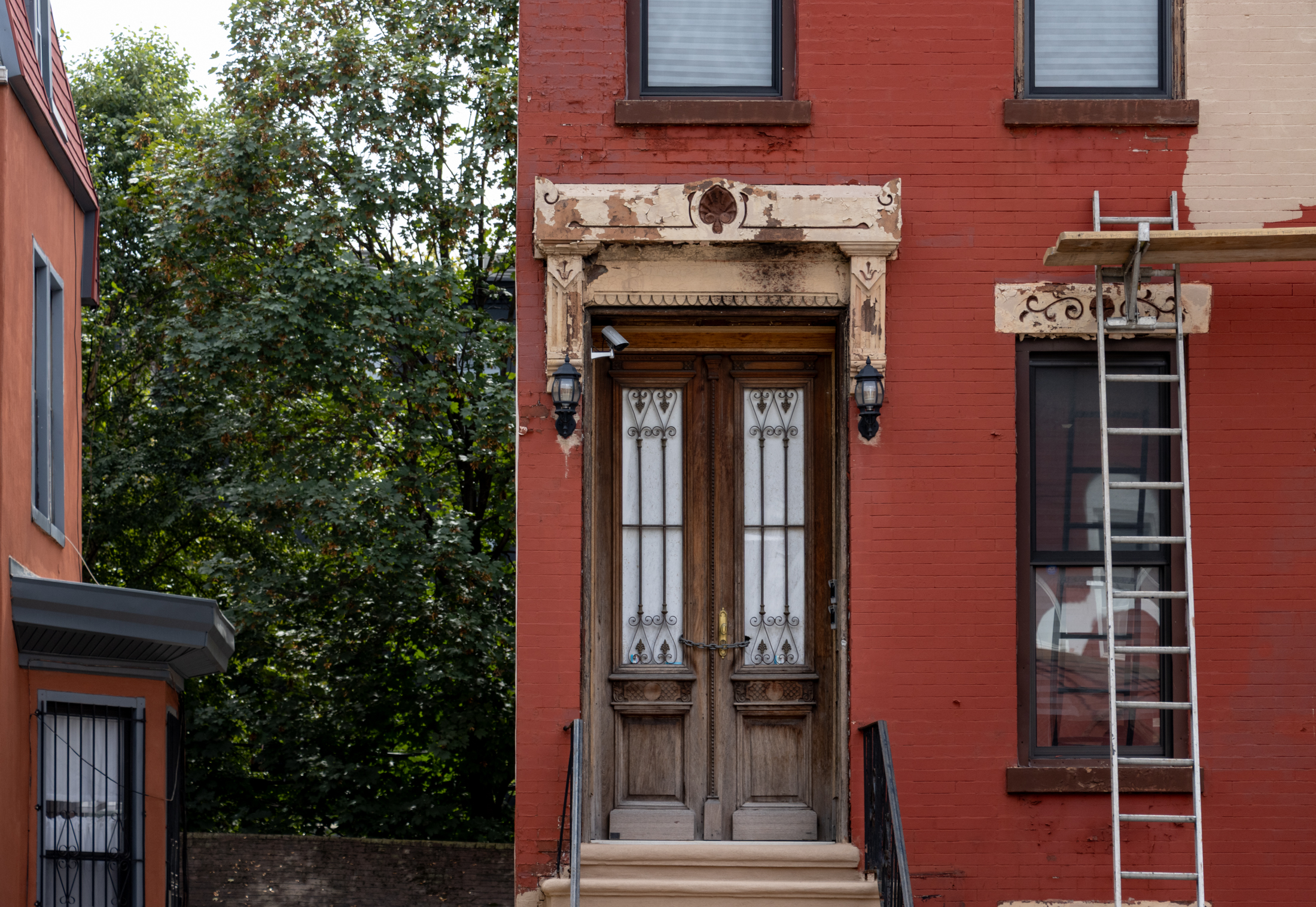Last Week's Biggest Sales
1. BROOKLYN HEIGHTS $3,895,000 80 State Street GMAP (left) This 4,550-sf, 2-family was first listed for $4,950,000 in late 2008, according to StreetEasy, and the price was cut a number of times until it was asking $3,895,000 last September. Ad said: “Rare opportunity to own a 25-foot-wide Gothic Revival 1850’s Brooklyn Heights townhouse with original…


1. BROOKLYN HEIGHTS $3,895,000
80 State Street GMAP (left)
This 4,550-sf, 2-family was first listed for $4,950,000 in late 2008, according to StreetEasy, and the price was cut a number of times until it was asking $3,895,000 last September. Ad said: “Rare opportunity to own a 25-foot-wide Gothic Revival 1850’s Brooklyn Heights townhouse with original details intact. Grand double parlor with exquisite moldings and original pocket doors, three wood-burning fireplaces, and rooms flooded with superb Southern-facing light…” Its seller bought it for $3,300,000 in 2005. Entered into contract on 10/1/09; closed on 1/5/10; deed recorded on 1/27/10.
2. COBBLE HILL $3,200,000
243 Kane Street GMAP (right)
As covered last week, this renovated townhouse was originally asking $2,950,000 in ’07, but the price was raised to $4,075,000 in mid-’08. As it lingered on the market, the price was reduced several times until it was last asking $3,500,000 as of mid-’09. Its seller bought it for $1,802,000 in 2007. Entered into contract on 1/15/10; closed on 1/15/10; deed recorded on 1/28/10.
3. BROOKLYN HEIGHTS $2,995,000
20 Grace Court Alley GMAP
As previously noted this 2,550-square-foot brick house was originally asking $3,300,000 and the widget appraisal came in at $2,766,135. Its sellers bought it for $2,675,000 in ’05. Entered into contract on 11/17/09; closed on 1/15/10; deed recorded on 1/28/10.
4. PARK SLOPE $2,125,000
524 2nd Street GMAP
When this 2-family was a House of the Day in October, it was listed for $2,375,000. The reader widget guess on it was $1,952,045. Entered into contract on 11/5/09; closed on 1/11/10; deed recorded on 1/26/10.
5. FORT GREENE $1,870,000
119 Fort Greene Place GMAP
When this brownstone was a House of the Day in November, it was listed for $1,995,000. The reader widget appraisal clocked in at $1,615,042. Entered into contract on 11/25/09; closed on 1/7/10; deed recorded on 1/27/10.
Photos from PropShark.





Also, 3. is just wrong. Affordability predicts the cost of housing, not houses. When people have more money they buy more house — newer, bigger, more doodads. So the price of the average house goes up with income because the size and quality of the average house goes up with income. Quality-adjusted prices don’t go up with income; they just track building costs, as they must.
The only time people decide to pay more for the same house is in bubbles when they think that they aren’t spending anything because the house comes with guaranteed price appreciation. Read Shiller. Or Mackay.
PS: Do you have evidence at all for 2? If that were true, why would there be an investor-owned housing?
FSRQ: You are missing the forest for the trees. Only one thing matters: it’s a capitalist market.
If banks and developers really believe that row houses in Cobble Hill can be sold for $3.2m without kitchens, they’ll make as many as necessary to fill as much demand as is out there. It doesn’t cost $3.2m to build a replica, convert a rental property or a factory/school/tenement/garage, convince people that Smith Street is in Cobble Hill, convince the city to upzone Pacific St and build townhouses in the sky, add some leaded windows to a plain-jane house, etc. And they’ll keep doing it until demand is met and prices drop to the cost of building, or the costs of converting & building get up to these values.
Adjustment is slow. You can’t use costs to predict market prices today or next year. But you can bet good money that over any reasonably long time, prices will fluctuate around costs. Nothing else is sustainable. The only way that these buyers are going to break even if they hold long term is if it is so hard to build in NY that it actually costs $800psf to build kitchenless houses in BK. I don’t believe it does. Do you?
1.Stuy town was commercial RE – and the most overinflated property of the bubble – if peoples homes generally fall 75% from the high, there will be riots – cause people will stop paying the mortgages, and the banks will fail and at that rate of loss there is nothing the Govt could do to stop it.
2.Homeowners have virtually always been willing to pay more than investors (pp unit is always less on investment property, even if for volume discount) – and while rentals and purchase price are correlated they almost never historically run in tandem.
3. “safe prediction is fundamental value” – true but fundamental value for home prices is not determined by GRM – it is usually best determined by affordability indexes and demographic trends
4. You are right 10X rent is too high for most Investment residential property – EXCEPT when the RR has been suppressed due to NYC rent stabilization the “rules” often get thrown way out of wack
5.RE prices are still too high no question; but cost of production is only one of the many small factors that effect RE prices and mostly irrelevant in looking at places like Cobble Hill –
Sum = GRM is a near useless metric for determining fair value of a RE unit for owner/occupied usage – and anyone who argues that it is – doesnt know $hit about short, long ,medium or historical term trends of valuation.
The logic of BHO’s metric is pretty simple. Fundamentally, prices are determined by COST OF PRODUCTION. If people are willing to pay more than that, then investors make more until costs go up or the people willing to overpay run out. If people aren’t willing to pay that much, then investors refuse to produce.
In real estate, it takes a long time to build/convert/renovate, so it is easy to depart from fundamental value. But the pressure remains.
Currently, Cobble Hill prices are wildly above the cost of production — renovating, conversions, new construction, comparable neighborhoods, expanding the neighborhood boundaries. That’s not stable. Investors will create new supply until prices come down or the cost of creating new supply goes up.
Any INVESTOR who believes these prices predict next year’s prices should be willing to buy unrenovated rentals at well over their value as a rental. End result: supply changes. Either rents go up or prices go down.
1. Stuyvesant Town is already down roughly 75% from peak and there are no riots in the streets. 75% off peak bubble prices is not Armageddon. It’s closer to fundamentals than the peak was. Anyway, low housing prices are GOOD for the economy, not bad: they leave money for productive investments.
2. Zell paid $550 psf in Manhattan. This is not bullish news for overpriced Brooklyn RE.
3. If you are trying to predict long run prices, the only way to do it is to assume that the market works the way it’s supposed to. Bubbles don’t last forever. In the end, market forces catch up. If homeowners are willing to pay more than investors — usually they aren’t, since investors are better risk spreaders, and homeowners, especially in NY, can always rent — then investors will eventually convert rentals to owner-occupied. So, over time, rental and owner prices are likely to be relatively close EVEN IF NO HOMEOWNER THINK OF HER HOME AS AN INVESTMENT.
4. Markets can stay out of whack for a long time — e.g., the last 10 years. But they can go out of whack in both directions, so if you don’t know when you are going to sell, the only safe prediction is fundamental value (plus or minus a lot). It’s dangerous to predict that the current overvaluation will continue, since that requires believing that the market doesn’t work — that investors won’t build new housing, that price reductions in Manhattan won’t entice any Brooklynite, that rentals won’t be converted, that renovations won’t happen — even though these prices mean that anyone converting rentals in Cobble Hill will double or triple their money.
5. The 15x metric derives from national comparisons of MEDIAN rental to MEDIAN homeowner prices and NOT from same house comparisons. The medians are not for similar units.
6. It isn’t possible for a long term investor to make money at much over 10x gross annual rent. So if investors are willing to pay more than that, it is because they think that rents are going up — or they are paying for the right to convert to a bubble-priced homeowner market. See yesterday’s HOD. Since no one thinks rents are going up soon, anything more than about 10x is bubble pricing.
7. Current comps indicate that we are still bubble priced. They are not evidence that the capitalist market has been abolished.
antidope – you might have been kidding, but if you follow BHO metrics to its logical conclusion – thats about where he is too – quote or not (could you be a little clearer BHO).
umm that 75% off was me fsrg. trying to add a little levity to a somewhat tedious debate.
fwiw, i think bho is hard-headed (and short data) but not illiterate or bitter or what else. he might even be the head of a big bear hedge fund (and have already socked away millions).
i think he’s wrong on the absolute number of his multiple that’s all.
however, all the other folks up in arms about his calculation: you do have to add in appreciation/depreciation to the calculation. if you’re a bear that adds significantly to the effective cost.
P.S.
“‘then prices should bottom at 75% off peak comps’
BHO – 2/2/10”
Wasn’t me, fsrq. Look carefully.
***Bid half off peak comps***